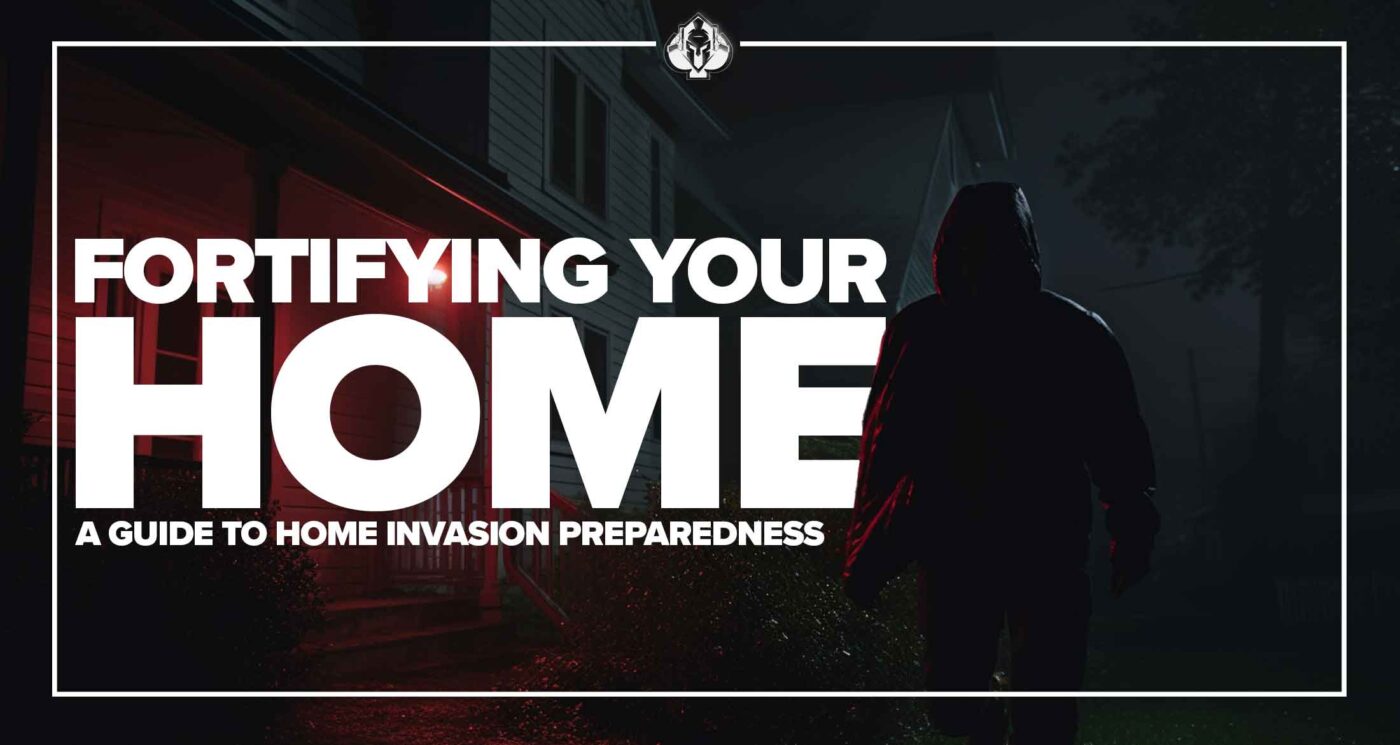We all understand the vital role guns play in ensuring the safety and security of our homes. In the rare but critical event of a home invasion, being prepared is not just about owning firearms; it’s about understanding how to effectively and responsibly use them to protect yourself and your loved ones. This article, brought to you by Wish Firearms and Tactical Training, dives deep into the best practices for firearm storage, quick access, engagement strategies, and ensuring the safety of family members during a home invasion.

I. Embracing the Role of Firearms in Home Safety:
Understanding that a firearm, when used correctly and responsibly, can be the ultimate equalizer in a home invasion scenario. It’s not just a tool; it’s a critical component of your family’s safety plan.
II. Strategic Firearm Storage:
A. Quick Access Safes:
- Optimal Placement: Position safes in locations that are easily accessible to you but out of sight and reach of children or unauthorized persons. This could be in a nightstand, under a desk, or in a closet.
- Example: A biometric safe in your bedroom for quick access at night and another in your home office for when you’re working.
- Biometric Safes: These safes use fingerprints or other biometric data for unlocking, which significantly reduces the time needed to access the firearm. In a high-stress situation, this can be a lifesaver as it bypasses the need for keys or combinations.
- Example: In an emergency, you can open the safe with just a touch, avoiding the hassle of remembering a code or finding a key
B. Multiple Storage Points:
- Dispersed Storage: Keep firearms in different parts of the house. This ensures that you’re never too far from a firearm in case of an emergency. The locations should be discreet but accessible to you.
- Example: A handgun in the master bedroom, another in the living room hidden in a bookshelf safe, and a third in the basement within a locked cabinet.
- Prioritizing Key Areas: Focus on areas where you and your family spend the most time. These are likely the first places you’ll need to access a firearm in an emergency.
- Example: If you spend a lot of evenings in the living room, having a firearm stored in a nearby cabinet can provide quick access.
III. Training for Quick and Effective Response:
A. Practice Makes Perfect:
- Regular Drills: Conduct regular drills to practice retrieving, loading, and securing your firearm under various conditions, including during the day, at night, and under simulated stress.
- Example: Set up scenarios where you practice retrieving your firearm from different storage points in the house, under timed conditions, or even in the dark to mimic night-time intrusions.
- Realistic Conditions: Practice in conditions that simulate real-life situations. This includes wearing your usual home attire, as accessing a firearm can be different in pajamas or casual wear compared to a holster.
- Example: Practicing while wearing different types of clothing to ensure comfort and proficiency regardless of your attire at the time of an incident.

B. Scenario-Based Training:
- Enrolling in Courses: Participate in home defense courses that offer scenario-based training. These courses often include simulations of home invasions, teaching you how to respond effectively under pressure.
- Example: Courses that include simulated break-ins, where you have to identify the threat, make split-second decisions, and safely use your firearm.
- Focus on Decision-Making and Awareness: Training should not just be about shooting accuracy but also about decision-making under stress, identifying friend from foe, and being aware of your surroundings.
- Example: Learning to quickly assess whether a noise is a threat or a family member, and how to communicate with family members during an incident to prevent accidental harm.
Strategic firearm storage is about balancing accessibility with safety, ensuring that your firearms are readily available when needed but secure from unauthorized access. Training for a quick and effective response involves regular practice and realistic scenario-based training to enhance your readiness, decision-making skills, and situational awareness. Remember, the objective is not just to be prepared but also to ensure the safety of all household members at all times.

IV. Ensuring Family Safety During an Engagement:
A. Communication and Safe Zones:
Establishing Safe Zones:
- Identification and Purpose: Choose a room or area in your house that can be quickly and easily accessed by all family members. This could be a reinforced room like a master bedroom with a sturdy, lockable door or a basement.
- Example Scenario: In a two-story house, the upstairs master bedroom could be designated as the safe zone. It has a phone to call 911, a first aid kit, and a lockable door. In case of a break-in, all family members who are upstairs would gather in this room.
Communication Signals or Code Words:
- Creating Code Words: Develop simple, unique code words that all family members understand. These words should indicate specific actions, like moving to the safe zone or confirming safety.
- Example Scenario: Use code words like “RED LOCK” to signal everyone to quietly move to the safe zone. Another code, like “GREEN CLEAR,” could mean that it’s safe to come out or that the danger has been neutralized.
B. Tactical Movement and Positioning:
Tactical Movement Through Home:
- Principles of Movement: Learn how to move silently and efficiently in your home, minimizing exposure. This involves knowing how to use walls and furniture for cover.
- Example Scenario: If you hear a noise downstairs while you’re in your bedroom, instead of rushing out, move slowly along the walls, using them as a guide and cover. Check corners and doorways cautiously as you move to the safe zone or to investigate.
Understanding Home Layout for Cover and Concealment:
- Identifying Cover and Concealment: Differentiate between cover (which protects from bullets) and concealment (which hides you from view). Furniture, thick walls, or a heavy closet might provide cover, whereas curtains or thin doors offer only concealment.
- Example Scenario: In your living room, a sturdy bookcase might serve as cover, while a couch might only offer concealment. During a home invasion, if you’re unable to reach the safe zone immediately, use these spots strategically to stay protected or hidden while assessing the situation or preparing to engage.
Implementing the Strategy:
Implementing these strategies effectively requires regular practice and drills. Family members should be familiar with the plan and comfortable with the code words and movements. Periodic walkthroughs and discussions can help reinforce the plan and ensure everyone understands their role during an emergency. It’s also beneficial to occasionally review and update the plan, considering any changes in the home layout or family routine.
The key is to balance the need for a quick response with the safety of all household members. The ultimate goal is to keep the family safe, not just to engage the intruder. Therefore, these strategies should always be implemented with caution, mindfulness, and a strong sense of responsibility.
V. Engaging the Intruder:
A. Rules of Engagement:
- Legal Use of Force: Familiarize yourself with state and local laws regarding self-defense and the use of deadly force. The legal standard often involves whether a reasonable person would have felt that their life was in imminent danger.
- Example: In some states, the ‘Castle Doctrine’ applies, allowing homeowners to use force, including deadly force, against an intruder without the duty to retreat.
- Neutralizing the Threat: The aim is to stop the threat, not necessarily to harm the intruder. This means using force proportionate to the threat and ceasing once the threat is neutralized.
- Example: If an intruder is disarmed and subdued, the use of deadly force may no longer be justified legally or morally.
B. Tactical Advantage:
- Surprise and Defensive Positioning: Utilize the element of surprise to your advantage. Avoid announcing your position. Use your knowledge of your home’s layout to strategically position yourself.
- Example: If you hear an intruder in the living room, position yourself where you have a clear view but are not directly in the line of sight as they enter a hallway or doorway.
- Room Clearing and Cornering: Learn techniques for safely clearing a room and handling corners. This involves checking all potential hiding spots and blind spots methodically.
- Example: Practice slicing the pie technique at doorways or corners, which allows you to slowly and safely expose as little of yourself as possible while gaining a visual of the room.

VI. Post-Incident Protocol:
A. Legal Considerations:
- Immediate Steps: Call 911 immediately after the incident, even if no shots were fired. Be factual in your report, but avoid going into too much detail over the phone as everything is recorded.
- Example: Inform the operator of the situation, that you were afraid for your life, and request medical and police assistance.
- Legal Counsel: Have the contact information of a lawyer who specializes in self-defense cases. Don’t engage in extensive discussions with law enforcement until you have consulted your attorney.
- Example: Prepare a simple statement and then respectfully indicate that you will fully cooperate after consulting with your legal counsel.
B. Emotional and Psychological Impact:
- Emotional Aftermath: Be prepared for a range of emotions, from relief to guilt to fear. It’s normal and okay to seek counseling after such a traumatic event.
- Example: Attend therapy sessions or support groups to process the incident and its impact on your mental health.
- Support for Family Members: Recognize that each family member may react differently. Provide them with the support they need, whether it’s talking about the incident or seeking professional help.
- Example: Encourage open discussions at home or arrange for family counseling sessions to ensure everyone copes healthily.

VII. Continuous Learning and Improvement:
A. Staying Informed and Trained:
- Latest Tactics and Technologies: Stay updated on new home defense strategies and advancements in firearm technologies that could enhance your home security.
- Example: Subscribe to relevant magazines, follow experts on social media, or join online forums to stay informed.
- Ongoing Training: Engage in regular training to keep your skills sharp. This should include both firearm handling and tactical home defense strategies.
- Example: Enroll in annual refresher courses or participate in simulations to keep your response skills honed.
B. Community Engagement:
- Gun Clubs and Training Communities: Being part of a community can provide valuable support and shared learning opportunities.
- Example: Join local gun clubs, attend community safety meetings, or participate in group training sessions for shared experiences and tips.
By expanding on these areas, you can build a comprehensive and effective strategy for dealing with a home invasion, while also ensuring you’re prepared for the legal and emotional ramifications that may follow. Remember, preparation, training, and knowledge are your best allies in ensuring your and your family’s safety.
In the world of firearms and home defense, being prepared is not just about owning the best guns; it’s about mastering them. At Wish Firearms and Tactical Training, we’re committed to providing you with the knowledge, skills, and mindset needed to effectively protect your home and loved ones. Remember, a firearm in the hand of a well-trained individual can be the key to safeguarding what matters most. Train hard, stay vigilant, and know that we are your partners in this journey to ensure your home remains your sanctuary.



